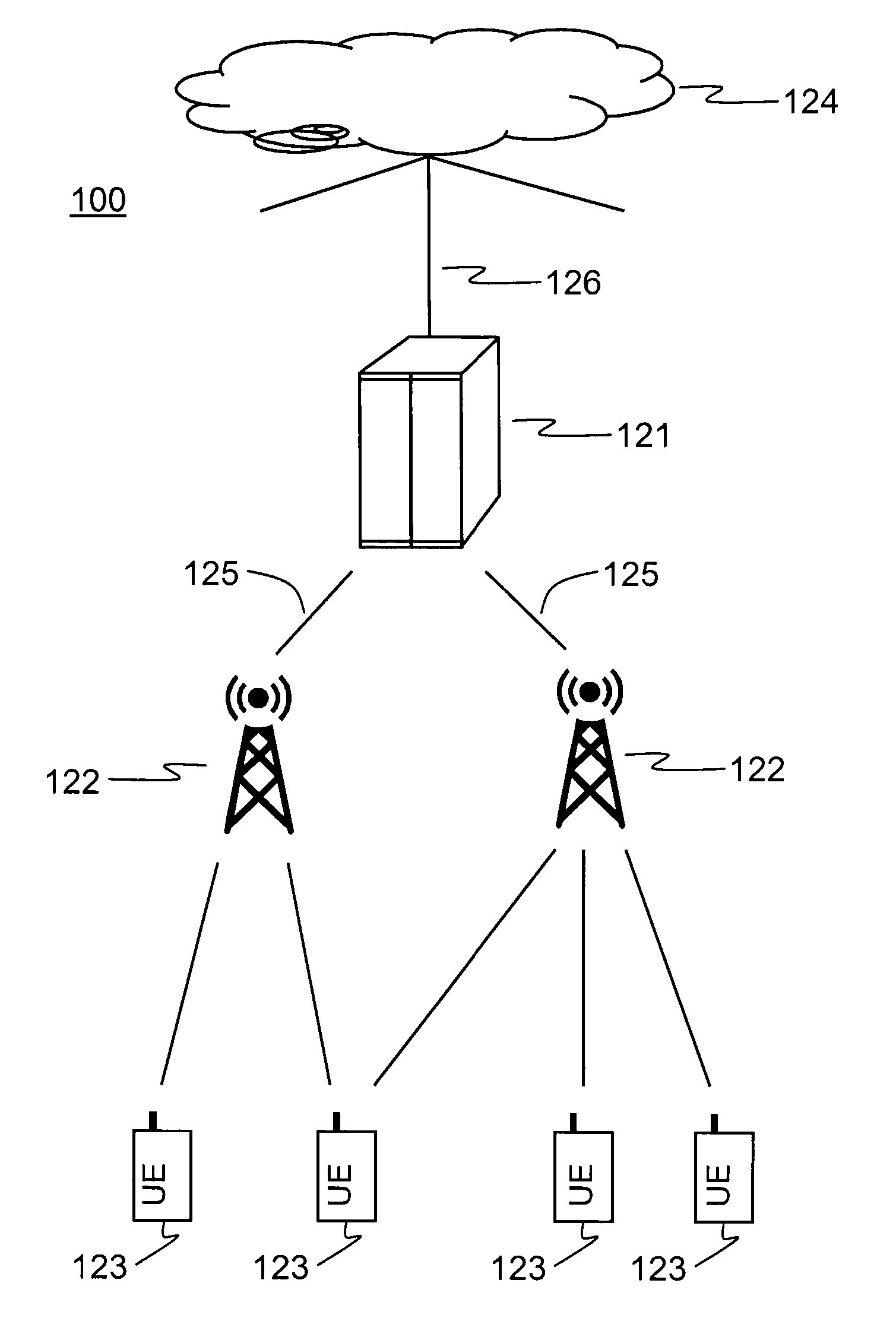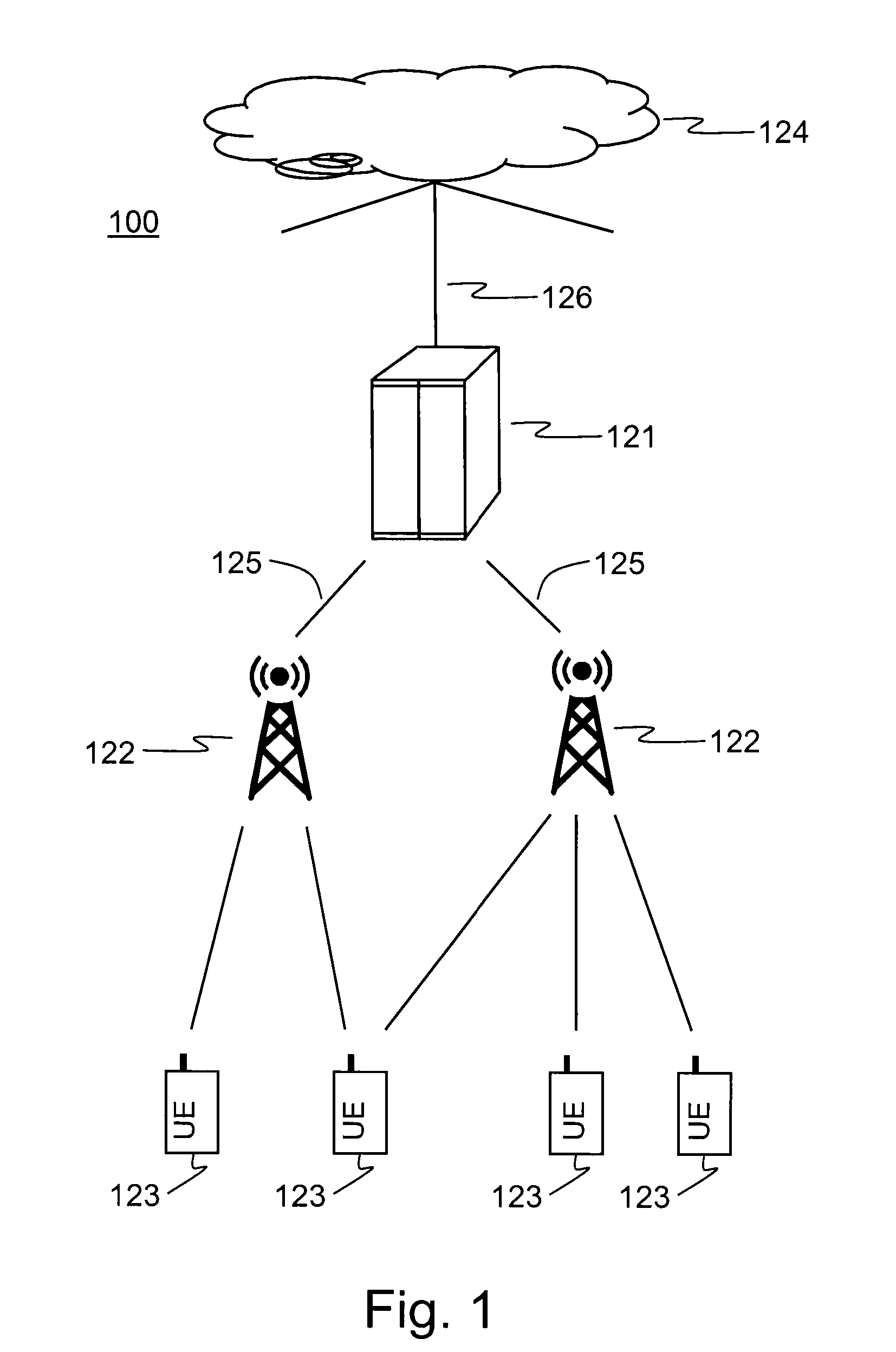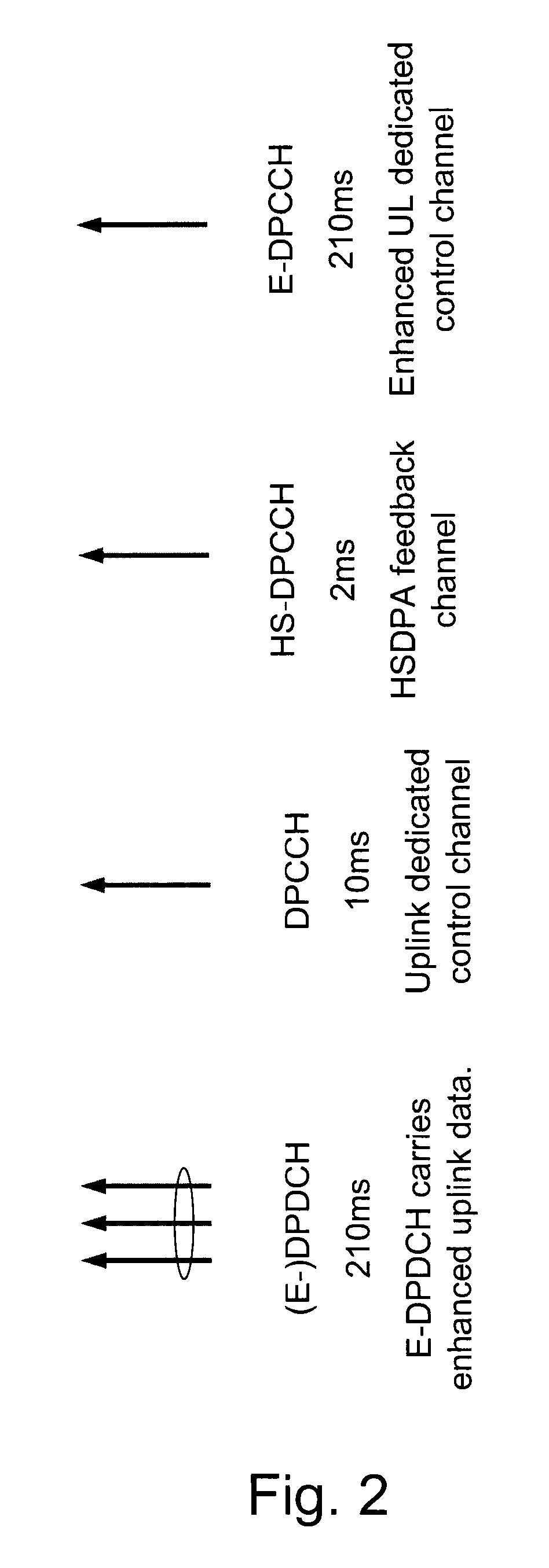Method and Arrangement for Activity Detection in a Telecommunication System
a telecommunication system and activity detection technology, applied in the field of methods and arrangements in the 3rd generation telecommunication system, can solve the problems of node b transmit power limitation, code shortage, frequent and error-prone signalling, etc., and achieve the effect of simplifying the coordination of transitions
- Summary
- Abstract
- Description
- Claims
- Application Information
AI Technical Summary
Benefits of technology
Problems solved by technology
Method used
Image
Examples
first embodiment
[0022]The present invention relates to a method in a communication system introducing a set of rules commonly known to the Node B and user equipments in order to independently initiate in one of said units a state transition to a reduced activity mode when a predefined criterion has been fulfilled. The following description discloses a non-limiting and non-exhaustive list of embodiments of the present invention with regard to applied rules and criterions for inactivity / activity state transitions. Said rules are either fixed stored in a storing means 21, 31 in the Node B and user equipment or provided to these units by a network controller unit at call setup and can be initiated / performed in either the Node B or the user equipment. The rules imply the effect of reduced uplink interference and / or reduced resource usage with regard to power consumption or processing resources. In the present invention the applied rule relates to a reduction in the reporting of the channel quality infor...
second embodiment
[0027]the present invention relates to uplink gating of the Dedicated Physical Control Channel (DPCCH): This rule bases on the criterion that a means 21 has detected that there has not been any activity on the E-DCH for a particular user equipment for a certain time, i.e. the user equipment has currently no data to transmit on the uplink. This time can be expressed either by help of the TTI, e.g. 1TTI, or by help of a timer 23 having value Inactivity_Threshold_for_UE_DTX_cycle_2. According to the rule implemented in the user equipment and the Node B, the user equipment will then apply a gated uplink transmission, denoted by a cycle time UL DTX_cycle_1 or, if there is still no E-DCH activity after an even longer time, a second cycle time UE_DTX_cycle_2, which is longer than the first cycle time. A gated transmission implies that transmissions are performed at full power but not in every slot. For instance, when only using every 4th transmission slot this would lead to an interference...
PUM
 Login to View More
Login to View More Abstract
Description
Claims
Application Information
 Login to View More
Login to View More - R&D
- Intellectual Property
- Life Sciences
- Materials
- Tech Scout
- Unparalleled Data Quality
- Higher Quality Content
- 60% Fewer Hallucinations
Browse by: Latest US Patents, China's latest patents, Technical Efficacy Thesaurus, Application Domain, Technology Topic, Popular Technical Reports.
© 2025 PatSnap. All rights reserved.Legal|Privacy policy|Modern Slavery Act Transparency Statement|Sitemap|About US| Contact US: help@patsnap.com



